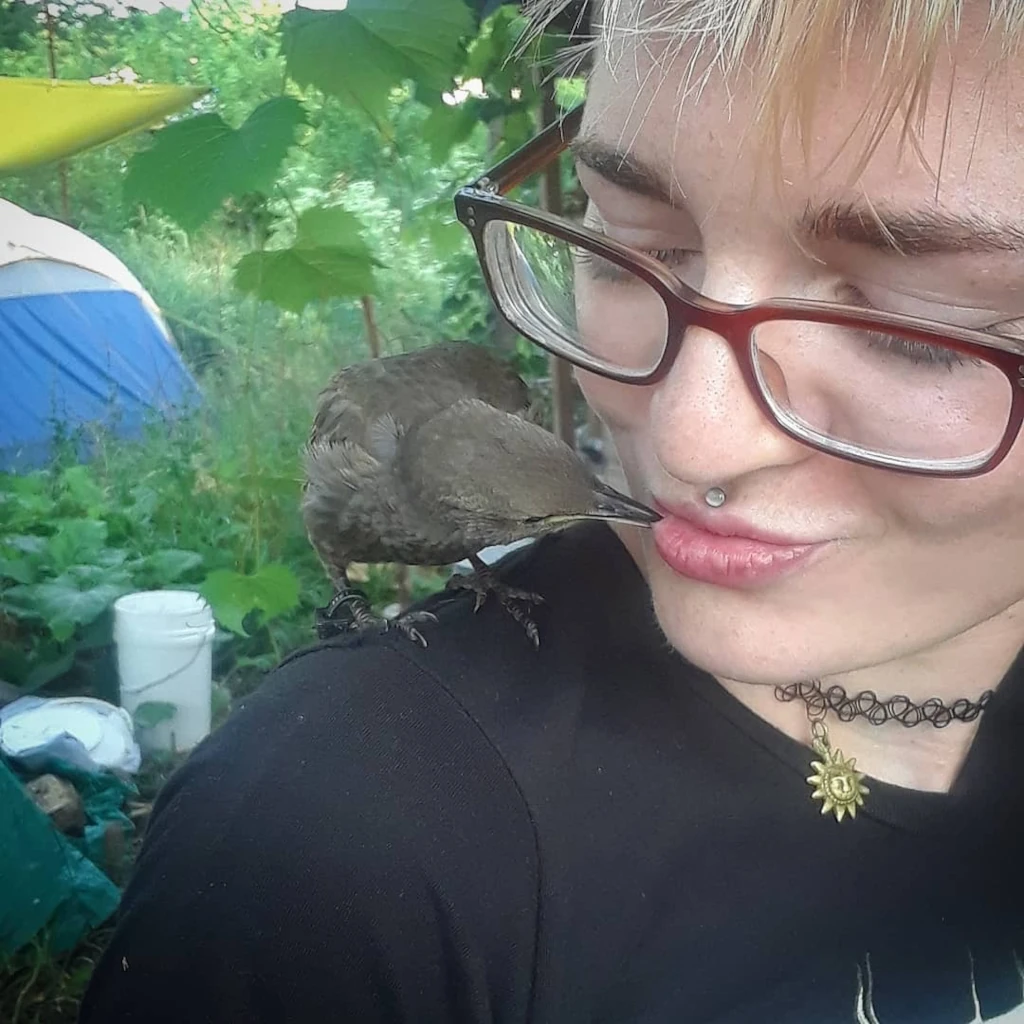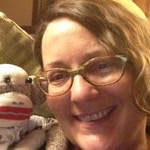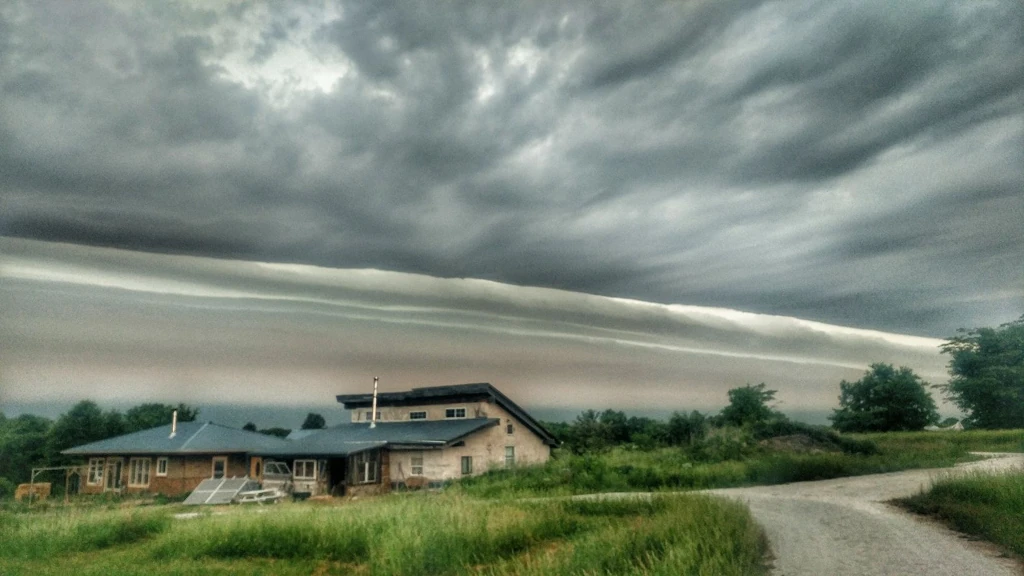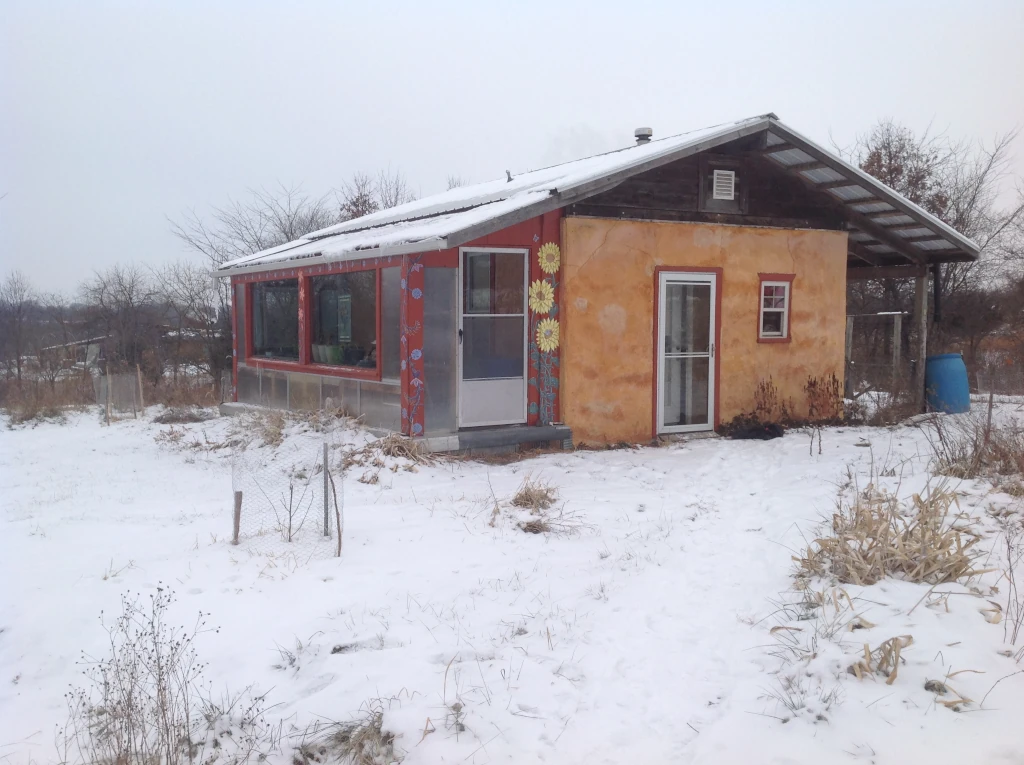My Search for a Home: A Dancing Rabbit Update
Published: Tue, 01/17/23

My Search for a Home:
A Dancing Rabbit Update
Ever wonder how a person comes to live in an ecovillage? Liz here, to tell my story about how I came to live at Dancing Rabbit Ecovillage. Hang on to your hat; my story has twists and turns and some serendipitous coincidences…
About 30 years ago I came across a book called, Ecotopia. Ernest Callenbach wrote it in the late ‘70s, about California, Oregon, and Washington state seceding from the rest of the US and forming a country called Ecotopia. The story follows a US reporter who visits Ecotopia 20 years after secession. At first he finds the customs and lifestyles of the Ecotopians quite strange, but as his visit goes on, he finds himself drawn more and more to the place and the people,
until finally, well, you can read the story to find out how it ends.
Callenbach lived in Berkeley, California, at the time he wrote Ecotopia. Berkeley in those days was described as “a seedbed of innovation and radical thinking.” Fast forward to the nineties, when I bought my home in Berkeley. Berkeley’s first recycling program in the US was already 20 years old, and the culture there had changed to stressed out people trying to survive high rent and housing prices, streets jammed with traffic, and “spare the air” days when
asthmatics like me would have to stay indoors, away from increased air pollution or wildfire smoke. People locked their doors at night, and everyone struggled for time to connect with friends and family. I read Ecotopia and yearned to live in that future world, where people lived in harmony with nature and life was relaxed, friendly, and purposeful. It remains one of my most favorite books. The fact that Callenbach used the San Francisco Bay Area as a backdrop made it even more
real to me. When my son, Graham, was a teen, I gifted my copy of the book to him and it remains a touchstone for us.
Another thread in this story is that my whole adult life I’ve been looking for a place to call home. A geographical location, and a specific building. Every place I went on vacation (Greece, Hawaii, France, England, Australia, Colorado), I would try it on as a potential place to move to. Add to that, every week, at least once, I would dream about living in, or taking a tour of, a different home. Each one was very different and in a different locale; in the mountains, on
the beach, in the jungle, you name it. In the meantime, I settled in Berkeley, bought a humble Craftsman bungalow with my partner, and we raised our kids there for over 25 years. During that time, I couldn’t bring myself to uproot the kids from their friends and birthplace, and my partner was happy being in Berkeley and had no motivation to leave.

My daughter, Talia, living close to nature. Photo by Liz.
OK, one more thread to add to this story, and then I’ll tie them all together. My partner (now my ex-partner) took architecture classes in his early college years. In those classes he was inspired by a teacher who taught primarily from a book called, A Pattern Language, by Christopher Alexander, who also lived in Berkeley and taught at UC Berkeley for 30 years. Because we were both interested in architecture, we studied the patterns in the book that led to buildings, interiors, clusters of buildings, towns, work places, common public spaces, pathways, everything, really, being built for human comfort and connectivity. Like Ecotopia, this book was also published in the mid-1970s, reflecting a time when people wanted comfortable, beautiful spaces to live in that reflected nature and led to communities where people connected with each other.
Our home in Berkeley was 71 years old when we bought it and it had not been renovated at all in all those years. It had, as they say, “good bones.” As we proceeded to renovate it, we were careful to apply principles from A Pattern Language, and we were pleased with the results. In the process, we learned a lot about those patterns, about architecture and about designing interior spaces. As the World Wide Web became part of everyday life, I developed my habit of looking online at photos of homes and interiors, for the fun of it and to collect ideas for my own home renovations. I continued my search for the ideal home in my dreams.
Fast forward to 2016. I had just finished acupuncture school after seven years, the kids were grown, my relationship with Chris was over, and my chance to finally move seemed clear before me. My stress release during all of this change was to look online at tiny homes on wheels (THOW), and I developed a kind of obsession with small spaces that were beautiful, functional and moveable. One serendipitous day, an article I was reading mentioned how tiny home communities had many benefits for single people. There was a link to click on, so I clicked. Up popped the website for Dancing Rabbit Ecovillage! The website had photos of beautiful, organically shaped homes, none two alike, built by the people who lived there. Pedestrian streets and footpaths encouraged natural human interaction.They had their own solar power grid and took a non-consumerist approach to their lives in alignment with a sustainable future. And the website language was smart and informal, a welcome relief from corporate marketing text bent on selling me things. Before the afternoon was over, I signed up for a 10-day permaculture course at Dancing Rabbit and persuaded my son to come with me.
DR was founded in 1998 by a group of Stanford graduates who lived collectively in Berkeley. DR’s village layout uses A Pattern Language principles for densely clustered buildings in a pedestrian friendly setting, and our application for building a home at DR references the book as a guide for interior and exterior design. There are so many cultural similarities between Ecotopia and DR that I was sure that Callenbach must have lived in an intentional community, but there is not much information about his life to verify that. Recently, Ecoptopia and a prequel that he wrote called, Ecotopia Emerging, were reissued, with a foreword by a good friend of his, Malcolm Margolin, author and founder of Heyday Books, a nonprofit publisher and cultural institution in Berkeley (and publisher of Ecotopia). In the forty years since it was first published, Ecotopia has been sold worldwide and translated into many languages. Margolin describes the Berkeley that Callenbach was living in at the time he wrote Ecotopia, with communes, worker co-ops, consumer co-ops, women’s groups, encounter groups, the nation’s first recycling program, organic gardening, barricades on many streets to keep out traffic, and a deep mistrust of any kind of authority. There was a deeply-held belief that our modern way of life was not sustainable, decades before the environmental movement became a global force. One can see all of these influences in Callenbach’s imagining of the future. I think that the founders of DR were influenced by the vestiges of these cultural norms in Berkeley as well, even as they were fading out and environmentalism was becoming more globally accepted.
Over the last six years that I’ve been at DR, I’ve observed the same pattern of adjustment that I went through when I arrived here as a visitor. People arrive at DR, mostly excited, and then many become tired and overwhelmed by being in a different place, with different rules and different social customs. Visitors don’t meet my eyes when I pass them on the paths, most don’t say hello (in true Ecotopian style, I feel miffed at this, but remind myself that they have just arrived). It takes most people about three days to start understanding that eye contact is normal here, saying hello to each other as you pass on our pedestrian streets is a minimum, and one can presume to have conversations with strangers about important things, things that weigh on our minds as individuals, but maybe are never spoken of, like the loneliness of modern life and what they want to manifest in their lives. They start keeping their cell phones in their pockets, instead of in front of their faces. After another three days, visitors start to find new social routines, like coffee group in the morning, or happy hour in the afternoon. The steep increase in relaxed, inclusive social time starts to nourish visitors, and I see them smile more (there are many things I could mention here, and if you’re curious, you can always come visit us and see for yourself). A similar transformation takes place with the US reporter who visits Ecotopia in the book (“Do you realize how competitive and detached you seem to us?” one of his Ecotopian friends says to him.)
When I arrived at DR, after my initial adjustment to the place and the people, all the many influences in my life that were moving me toward where I belonged, came together here, so it wasn’t a difficult decision to move toward more of it. Within a year of moving here, both my adult children moved to DR from Berkeley. And yes, you guessed it; as soon as I moved to DR, my home searching dreams ceased.

Liz Hackney is happily settled in a straw bale cottage and works primarily on a natural building project with her son and a crew of builders. She promises there will be an update on all the latest DR happenings in the next newsletter.
Dancing Rabbit Ecovillage, 1 Dancing Rabbit Lane, Rutledge, MO 63563, USA
Unsubscribe | Change Subscriber Options





